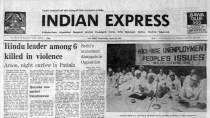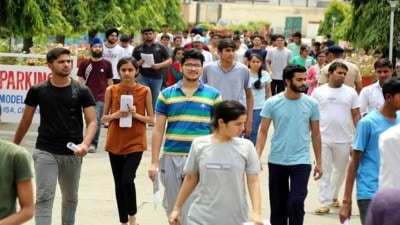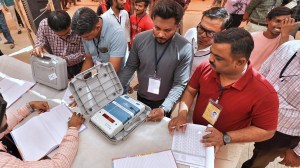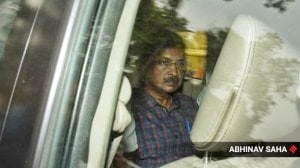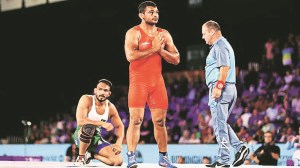- India
- International
Bhima Koregaon incident is a symbol of the long history of Dalit warriorship social mobility
It is a tragic irony that today Bhima Koregaon stands reduced in public discourse to an impossible choice, not just before Dalits but before the nation as such — between Brahmanical rule and colonial rule.
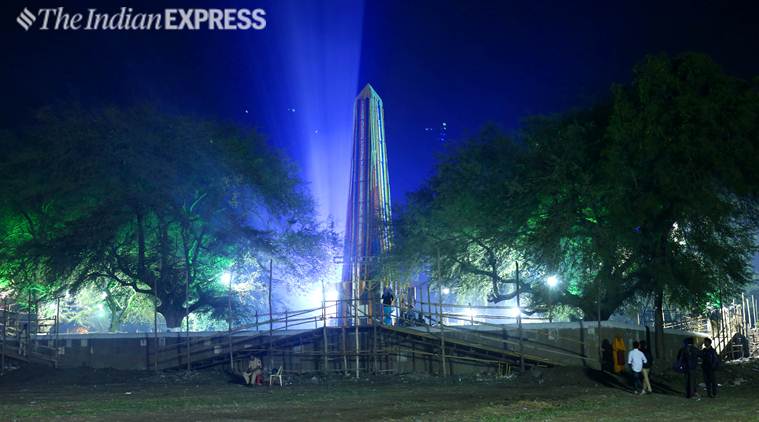 Bhima Koregaon as a contemporary symbol holds condensed within it this long history of untouchable warriors. (File photo)
Bhima Koregaon as a contemporary symbol holds condensed within it this long history of untouchable warriors. (File photo)
War is one way to reclaim honour for the bodies that caste menialises, degrades, renders untouchable. The history of Mahar (and Mang) warriors in western India is precisely such a history — of defying a social system that restricts the right to arms to so-called Kshatriyas and prohibits the frisson of body-to-body contact which war, like sex, necessarily entails. This history is also a history of achieving power, and proximity to power, by those who are seemingly born to serve and never to rule.
Bhima Koregaon is only one and a rather late instance of Mahar warriorship that has recently been caught up in a false double bind. Ultra-nationalists argue that the commemoration of Bhima Koregaon by Dalits and Ambedkarites is anti-national because the Mahars fought against the Marathas and on the side of the East India Company. Ambedkarites retort, and rightly so, that the Peshwai was an unabashed Brahmanical regime, which persecuted low castes and untouchables and was thus hardly representative of a nation.
Looking further back, we find that Bhima Koregaon is neither an exceptional nor a novel instance of Mahar warriorship. History is replete with earlier tales of Mahar glory in the battlefield (and of Dom valour in eastern India). The recent debates around Bhima Koregaon erases this longer history, recorded by military historians who are hardly ever read in classrooms, because in modern times we view the army as a neutral wing of the government and not as an institution with deep social roots and radical political potential.
Here are a few random examples from that history. Sidnak Mahar was a hero. When Shambhaji died battling Aurangzeb’s troops in 1688, Sidnak raised a Mahar army on his own, fought valiantly side-by-side with Shambhaji’s son and became a highly respected patil. His grandson, also called Sidnak, fought on horseback for Madhavrao Peshwa at the Battle of Kharda in 1795, and so impressed the commander that he invited the Mahars to reside inside the main camp, despite protests by Brahman and Maratha sardars.
Lest we surmise too quickly that Mahars were a Hindu force against the Muslim imperial power of the Mughals, let us recall Yesaji Naik Chibe. Chibe was supervising the building of the orange-brick bastion at Fort Purandhar for the Shah of Bidar, when faults appeared in the foundation. The Shah dreamt that the fort demanded the burying alive under it of an eldest son and his wife. Yesaji Naik offered to sacrifice his eldest son and daughter-in-law, though ultimately Bahirnak Sonnak, another Mahar worker, did so. The fort became invincible and the Shah made Yesaji the fort captain and gave Bahirnak two villages and unlimited gold in gratitude.

These and numerous other stories are recorded in history and circulate in Dalit popular memory. These stories hark back to a past not-so-long ago when untouchables could acquire wealth, status and prestige. As historian Philip Constable reminds us, in those days the Kshatriya was an open-status class. Whoever excelled in war and acquired political significance was a Kshatriya — Shivaji himself forced Brahmans to consecrate him as king despite his low caste origins. In fact, Jyotiba Phule ascribed the success of Shivaji, in his 1869 Ballad of Raja Chhatrapati Shivaji, to the latter’s decision to recruit peasants and untouchables into his royal militia. The tradition of untouchable warriors was honoured by the Deccan Sultanates, the early Peshwa regime and even by the East India Company in its early days.
Things changed in the late 19th century. Through an 1892 law, the colonial state decided to exclude untouchables from the official list of “martial races”, on the ground that untouchables could not be expected to command or be obeyed. The English had bought into an exclusively Brahmanical view of Indian society. Add to this the rise of racism. Indians in the late 19th century were henceforth divided, to the detriment of lower castes and outcastes, between martial and non-martial races, not on the basis of past warrior traditions but on the basis of so-called biological or ethnic characteristics. The ancient term Aryan too came to acquire racial overtones. Middle castes like the Marathas now claimed to be Kshatriyas on the basis of being Aryans, defining themselves in opposition to non-Aryans — low castes and untouchables. Shivaji was transformed from being a king who made soldiering open to all, to an exclusively Maratha Kshatriya king.
It is not surprising, therefore, that ex-military Mahars were at the forefront of the Dalit movement in early 20th century Maharashtra, including Ramji Shinde, who recorded past Mahar military achievements, and Shivram Kamble, who became a stalwart in Maharashtra’s legislative politics. It is also not accidental that B R Ambedkar was born of an ex-military father. If Ambedkar took up the cause of Dalit recruitment in the army, it was not just by way of a right to employment but also a way of restoring political and martial salience to Dalits. As Ambedkar said in no uncertain terms, the denial of right to arms to Shudras and untouchables made political protest against caste toothless. And as Kamble argued, shorn of military trappings, earlier forms of Mahar naukari — as metenaiks who guarded mountain passes, kiledars in charge of fort security and vatandars in charge of villages — were reduced to compulsory forms of servitude.
Bhima Koregaon as a contemporary symbol holds condensed within it this long history of untouchable warriors. It is also symbolises that modern watershed moment when untouchable warriors were rendered menial, by a coming together of Brahmancial and colonial knowledge forms. It is a tragic irony that today Bhima Koregaon stands reduced in public discourse to an impossible choice, not just before Dalits but before the nation as such — between Brahmanical rule and colonial rule.
This article first appeared in the print edition on January 17, 2020 under the title ‘A genealogy of valour’. The writer, a historian, is professor at the Centre for the Study of Developing Societies, Delhi.
40 Years Ago
EXPRESS OPINION
More Explained
Apr 18: Latest News
- 01
- 02
- 03
- 04
- 05











